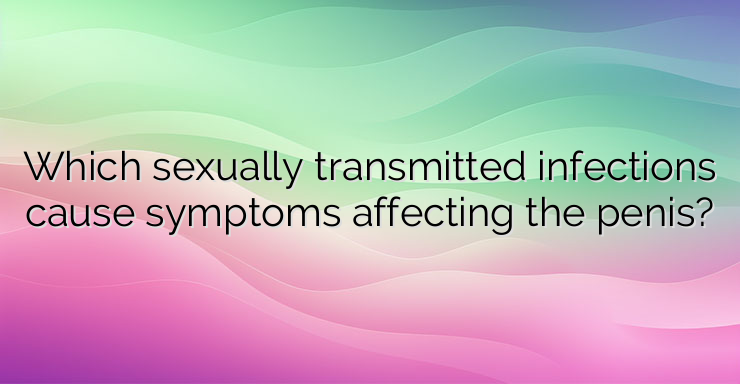STDs are infections that are spread through unprotected sex. While some infections may be relatively mild, others can cause problems ranging from pain to infertility or cancer. STDs often cause symptoms that affect a man’s penis or groin area. These symptoms can also be caused by factors other than sexually transmitted diseases, but a doctor’s examination is necessary to be sure. In sexually transmitted diseases, there are five common symptoms that can affect the penis: Pain or discomfort in the penis. Pain or discomfort when urinating or ejaculating can also be a sign of infection; Penile discharge – A thick white, yellow or green discharge that oozes from the penis can be a sign of gonorrhea. Clear discharge may be an indication of chlamydia; Single penile ulcer. In syphilis, a hard, painless sore (called a chancre) may appear on the penis; Painful blisters. The appearance of painful or itchy red spots or blisters on the penis or scrotum may be a sign of genital herpes. Pain or itching usually appears first, followed a day or two later by blistering; Swelling of the testicles. Orchitis (inflammation of the testicles) can be caused by many factors, but sexually transmitted diseases such as gonorrhea or chlamydia are the most common causes of the condition. There may also be pain and a feeling of heaviness in the scrotum Sexually transmitted infections can cause other symptoms. Some of these may affect other parts of the male genitalia or other parts of the body: Swollen lymph nodes. Swollen lymph nodes in the groin (inguinal lymph nodes) are common in many STDs. In HIV, swollen lymph nodes often appear around the neck (cervical lymph nodes); Itching in the pubic area. Itching may occur with lice; Linear red, itchy bumps. A mite infestation (scabies) causes red, itchy bumps that usually appear on lines. Scabies can also affect the genitals and other parts of the body; Widespread rash. A widespread rash may develop in some patients who have recently been exposed to HIV. This symptom can also occur with secondary syphilis, the form of the disease that develops years after the initial syphilis infection; Flu-like symptoms. Headache, fever, chills, body aches and fatigue affect many people in the early stages of HIV. Some of these symptoms are also present in other conditions. Therefore, it is important to consider whether it is a sexually transmitted infection if complaints occur soon after sexual contact, especially if condoms were not used. References: 1. Centers for Disease Control and Prevention. STD Facts – Gonorrhea 2. Centers for Disease Control and Prevention. STD Facts – Syphilis 3. Centers for Disease Control and Prevention.STD Facts – Genital Herpes 4. Urology Care Foundation. What are yeast infections?


Leave a Reply